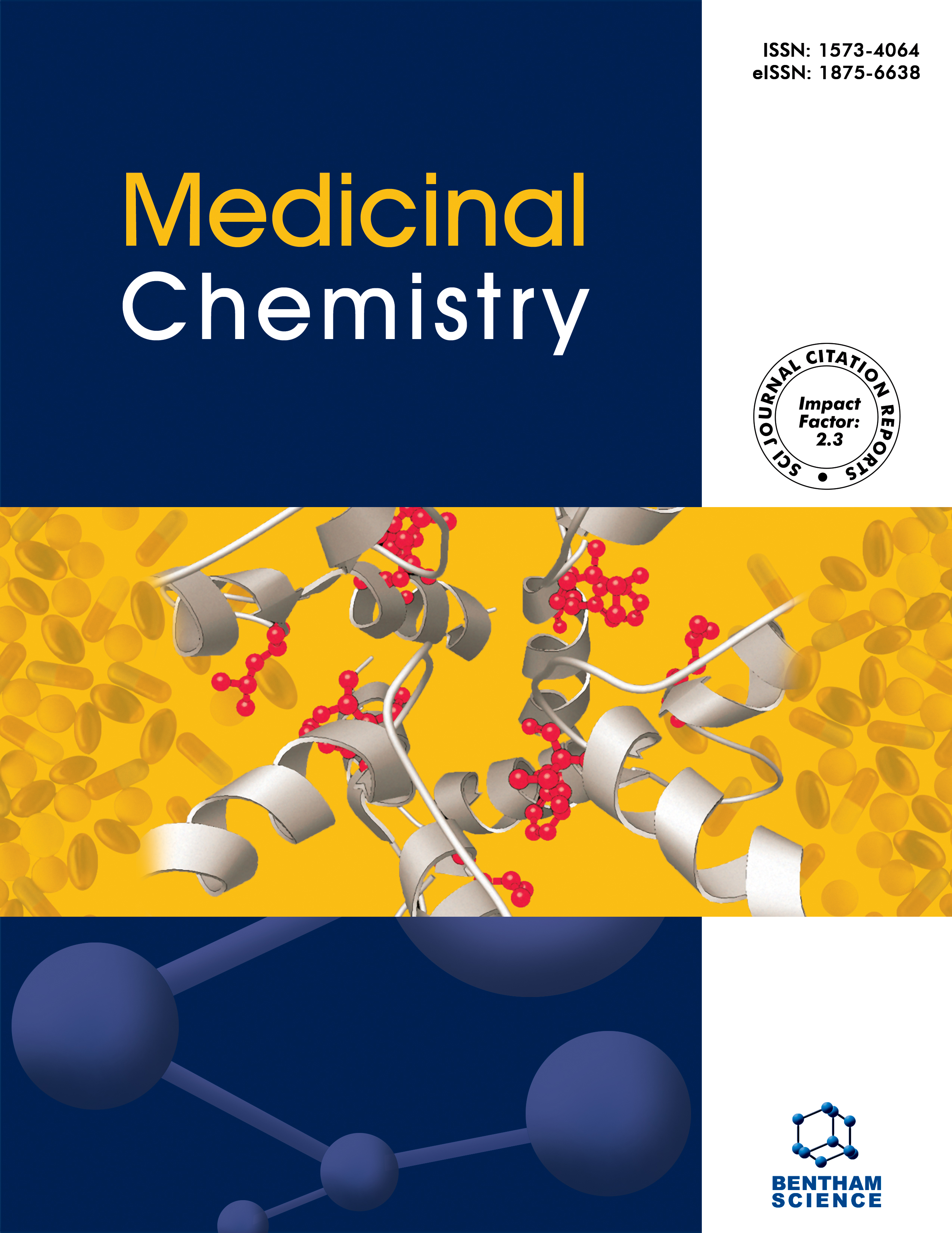- Home
- A-Z Publications
- Medicinal Chemistry
- Previous Issues
- Volume 20, Issue 4, 2024
Medicinal Chemistry - Volume 20, Issue 4, 2024
Volume 20, Issue 4, 2024
-
-
Nitrogen-fused Heterocycles: Empowering Anticancer Drug Discovery
More LessAuthors: Tanya Biswas, Ravi K. Mittal, Vikram Sharma, Kanupriya and Isha MishraThe worldwide impact of cancer is further compounded by the constraints of current anticancer medications, which frequently exhibit a lack of selectivity, raise safety apprehensions, result in significant adverse reactions, and encounter resistance mechanisms. The current situation highlights the pressing need to develop novel and more precise anticancer agents that prioritize safety and target specificity. Remarkabl Read More
-
-
-
Exploring the Therapeutic Marvels: A Comprehensive Review on the Biological Potential of Quinoline-5,8-Dione
More LessAuthors: Neetu Agrawal, Dimple Bansal and Shilpi PathakQuinoline-5,8-diones, also referred to as 5,8-quinolinediones or quinolinequinones, have been researched extensively for their antiproliferative effects, where they displayed great results. Other than anticancer, they exhibit multiple activities such as antimalarial, antiviral, antibacterial, and antifungal activities. Natural quinolinequinones have also been known for their significant activities. The review highlights the diverse biol Read More
-
-
-
Biochemical and In Silico Studies on Triazole Derivatives as Tyrosinase Inhibitors: Potential Treatment of Hyperpigmentation Related Skin Disorders
More Less>Introduction: Tyrosinase is a versatile, glycosylated copper-containing oxidase enzyme that mainly catalyzes the biosynthesis of melanin in mammals. Its overexpression leads to the formation of excess melanin, resulting in hyperpigmentary skin disorders, such as dark spots, melasma, freckles, etc. Therefore, inhibition of tyrosinase is a therapeutic approach for the treatment of hyperpigmentation. Methods: The current Read More
-
-
-
Triple Action of Lignosulfonic Acid Sodium: Anti-protease, Antioxidant, and Anti-inflammatory Effects of a Polymeric Heparin Mimetic
More LessAuthors: Rami A. Al-Horani and Kholoud F. Aliter>Background: Heparins are sulfated glycosaminoglycans that are used as anticoagulants to treat thrombosis. Heparins exhibit other potential therapeutic effects, such as anti-inflammatory, anti-viral, and anti-malarial effects. However, the strong anticoagulant activity of heparins poses a risk of life-threatening bleeding, limiting their therapeutic use for other diseases beyond thrombosis. To exploit the other effects of hepar Read More
-
-
-
Synthesis, Antimicrobial Evaluation, and Interaction of Emodin Alkyl Azoles with DNA and HSA
More LessAuthors: Yu-Hang Zhou, Ying Wang and Hui-Zhen Zhang>Objective: This study aimed to overcome the growing antibiotic resistance. Moreover, the new series of emodin alkyl azoles were synthesized. Method: The novel emodin alkyl azoles were synthesized using commercial emodin and azoles by alkylation. The NMR and HRMS spectra were employed to confirm the structures of novel prepared compounds. The in vitro antibacterial and antifungal activities of the prepared em Read More
-
-
-
S-Dihydrodaidzein and 3-(1,3-benzoxazol-2-yl)-benzamide, Two New Potential β-estrogen Receptor Ligands with Anti-adipogenic Activity
More Less>Background: The elucidation of molecular pathways associated with adipogenesis has evidenced the relevance of estrogen and estrogen receptor beta (ERβ). The positive effects of ERβ ligands on adipogenesis, energy expenditure, lipolysis, food intake, and weight loss, make ERβ an attractive target for obesity control. From ligand-based virtual screening, molecular docking, and molecular dynamic simulations, six new likely ER Read More
-
-
-
Oxadiazole Derivatives of Diclofenac as an Anti-proliferative Agent for B-cell Non-Hodgkin Lymphoma: An In vitro and In Silico Studies
More Less> Background: Non-Hodgkin lymphoma of B cell origin is the common type of lymphoma- related malignancy with poor response rate with conventional front-line therapies. Aim: The aim of the present study was to investigate the potential of new anti-inflammatory oxadiazole derivatives of Diclofenac as an anti-lymphoma agent through in vitro and in silico approaches. Methods: Anti-lymphoma potential was ev Read More
-
-
-
Heterocyclic-Based Analogues against Sarcine-Ricin Loop RNA from Escherichia coli: In Silico Molecular Docking Study and Machine Learning Classifiers
More LessAuthors: Shivangi Sharma, Rahul Choubey, Manish Gupta and Shivendra Singh> Background: Heterocyclic-based drugs have strong bioactivities, are active pharmacophores, and are used to design several antibacterial drugs. Due to the diverse biodynamic properties of well-known heterocyclic cores, such as quinoline, indole, and its derivatives, they have a special place in the chemistry of nitrogen-containing heterocyclic molecules. Objectives: The objective of this study is to analyze the interaction of sev Read More
-
Volumes & issues
-
Volume 21 (2025)
-
Volume 20 (2024)
-
Volume 19 (2023)
-
Volume 18 (2022)
-
Volume 17 (2021)
-
Volume 16 (2020)
-
Volume 15 (2019)
-
Volume 14 (2018)
-
Volume 13 (2017)
-
Volume 12 (2016)
-
Volume 11 (2015)
-
Volume 10 (2014)
-
Volume 9 (2013)
-
Volume 8 (2012)
-
Volume 7 (2011)
-
Volume 6 (2010)
-
Volume 5 (2009)
-
Volume 4 (2008)
-
Volume 3 (2007)
-
Volume 2 (2006)
-
Volume 1 (2005)
Most Read This Month
Article
content/journals/mc
Journal
10
5
false
en


